Two weeks ago New York Times’ photo blog published a selection of long lost photos by Gordon Parks, made in the 1950s before the Civil Rights movement came of age. They were originally taken for this story in Life Magazine. They are both wonderful and heartbreaking.
They are wonderful because they do exactly what a photograph should do: tell the truth, tell a story straight through the eyes to the heart, more eloquently than any words could tell it. And they are beautiful. Remarkably these are color photos, unlike most reportage from that era.
They are heartbreaking because they depict a world in which segregation is complete, where black children peer through a chain link fence at white children playing on a nice playground as if they were watching a movie. Although two societies occupy the same space at the same time, they are parallel universes that must not touch or interact.
I remember scenes like these coming of age as a child in the deep South. Our family traveled on summer vacations from Texas through the Gulf States to visit my grandparents in Pensacola, Florida, then up to see my grandparents on my dad’s side in Kernersville, North Carolina. So many small towns we passed through just like the ones in Parks’ photos. I remember the “whites only” signs and facilities, and staring at the folks on the other side of the divide. I was as innocent as those black children were, and just as completely separated from them as they were from me.
Of course those circumstances could not stand. America was the land of the free, or called itself so. And it proved itself once again to be the home of the brave when leaders like Martin Luther King, Medgar Evers, Rosa Parks and many lesser-known civil rights workers and freedom riders put their lives on the line to move our nation forward. Their courage was not without cost.
I was very young when all these things happened and didn’t understand them until much later. But the images Gordon Parks captured bring back a flood of memories. These are times I remember; I was there. Although I was on the other side, now I can imagine myself being on either side.
I certainly can imagine looking through the viewfinder of my Rolleiflex and seeing what he was seeing. Whether or not I’m in Gordon Parks’ league professionally, the satisfaction of turning that crank at the end of the roll, knowing I’ve made honest pictures and hoping they might make a difference, is something I have felt many times and hope to feel many times more.
Of course turning the crank at the end of a roll of film will not be much of that experience from now on. But I found it wonderful to see that Parks made these images on Kodachrome – no other emulsion could have preserved these colors so well for half a century. By now we’re accustomed to seeing virtually all photographs from that era in black and white. Here color surprises us with its immediacy, it makes the time and people feel so much more real than we expect.
I’ve copied just a few of Parks’ lost and found photos here – to see more visit NYT’s photo blog at http://lens.blogs.nytimes.com/2012/07/16/a-different-approach-to-civil-rights-images/ And take time if possible to view the link I included at the top, to see the images in their original context and to read Life Magazine’s dispatch from 1956.
(The photos below are copyrighted by The Gordon Parks Foundation)
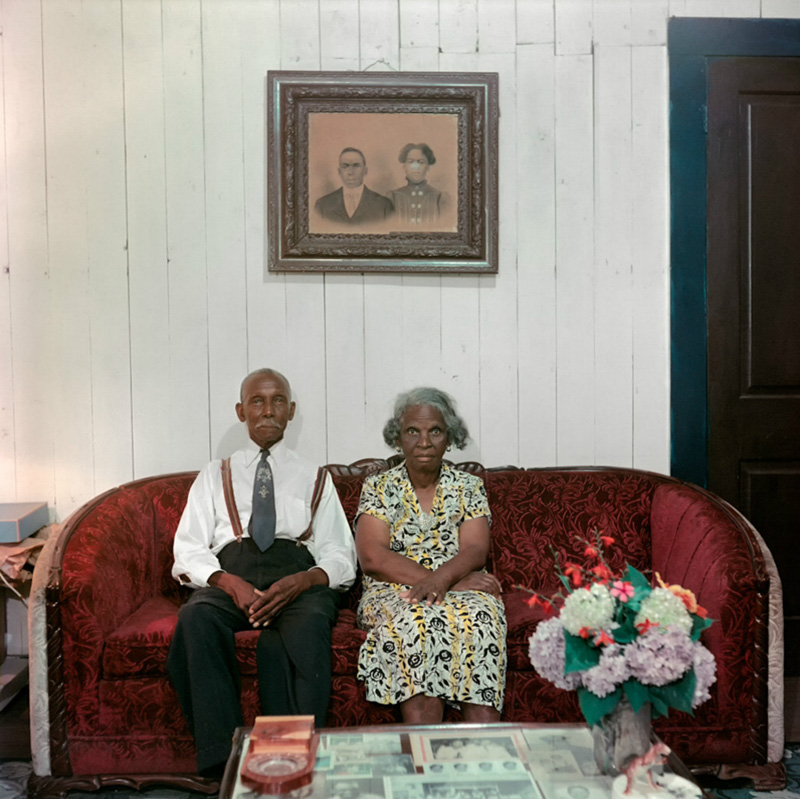
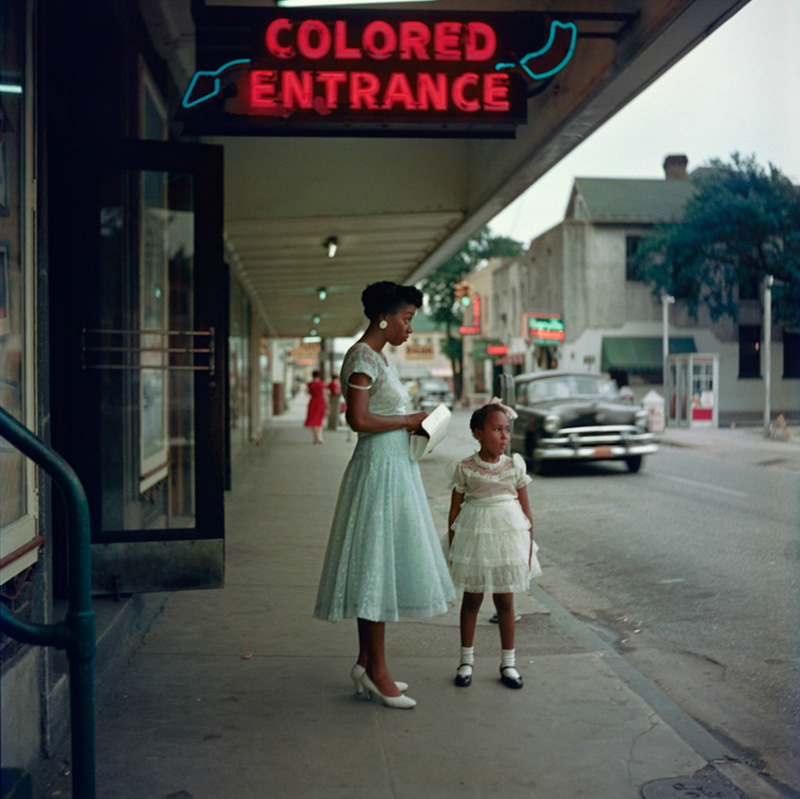
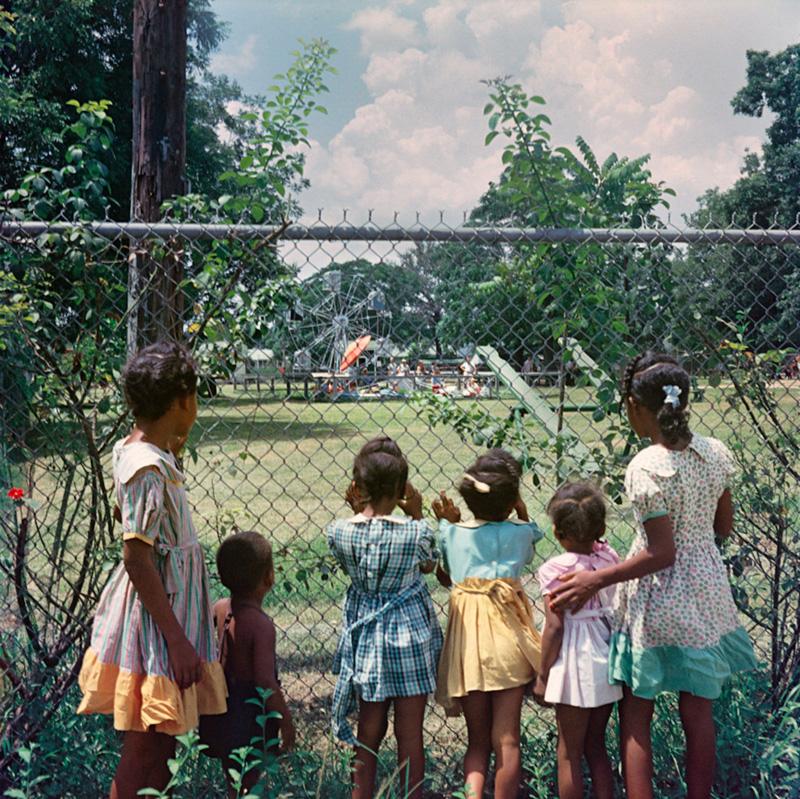
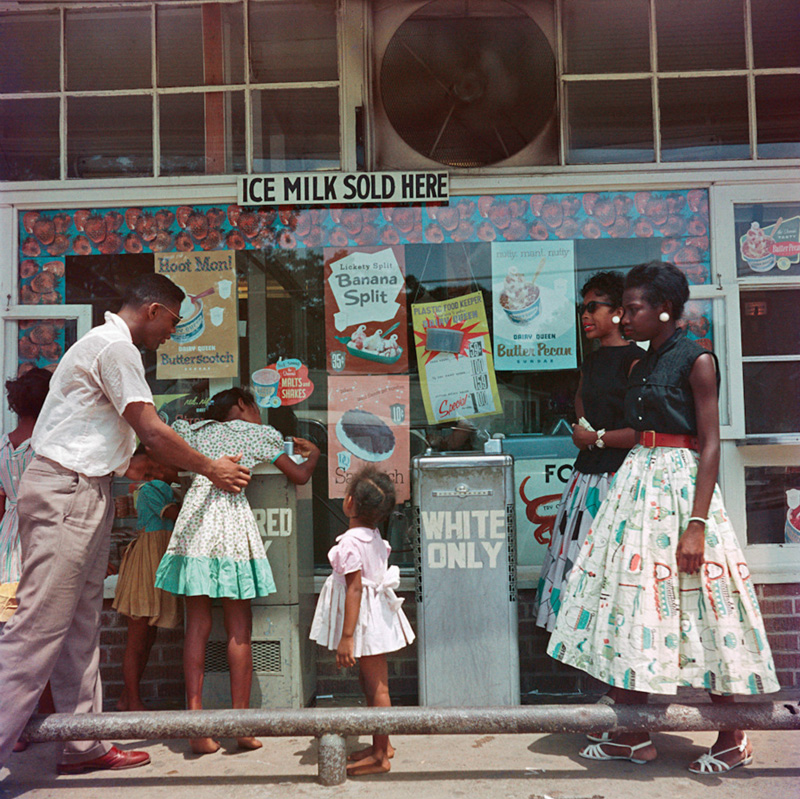
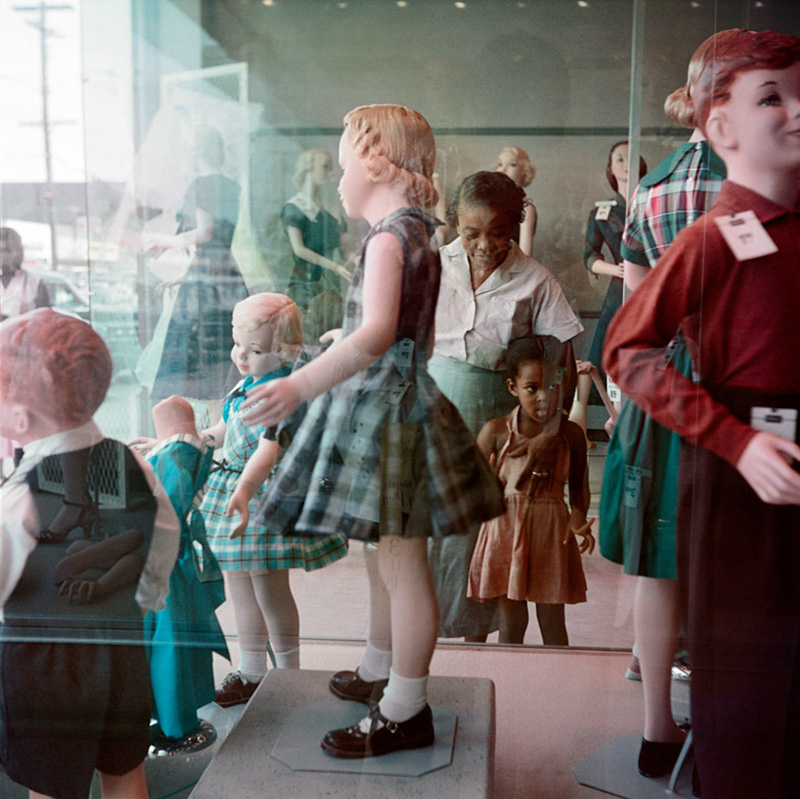
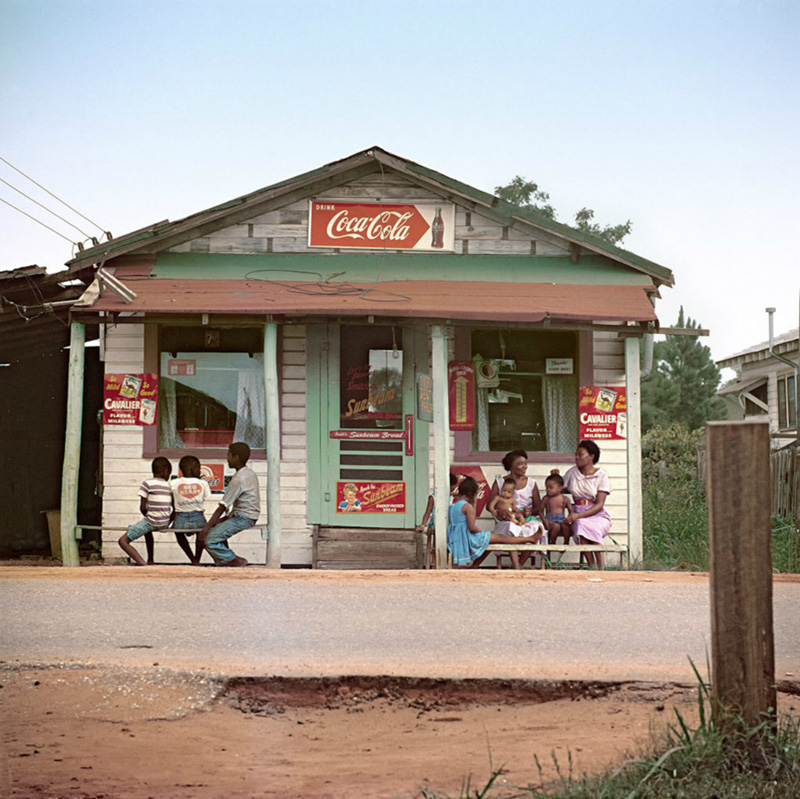
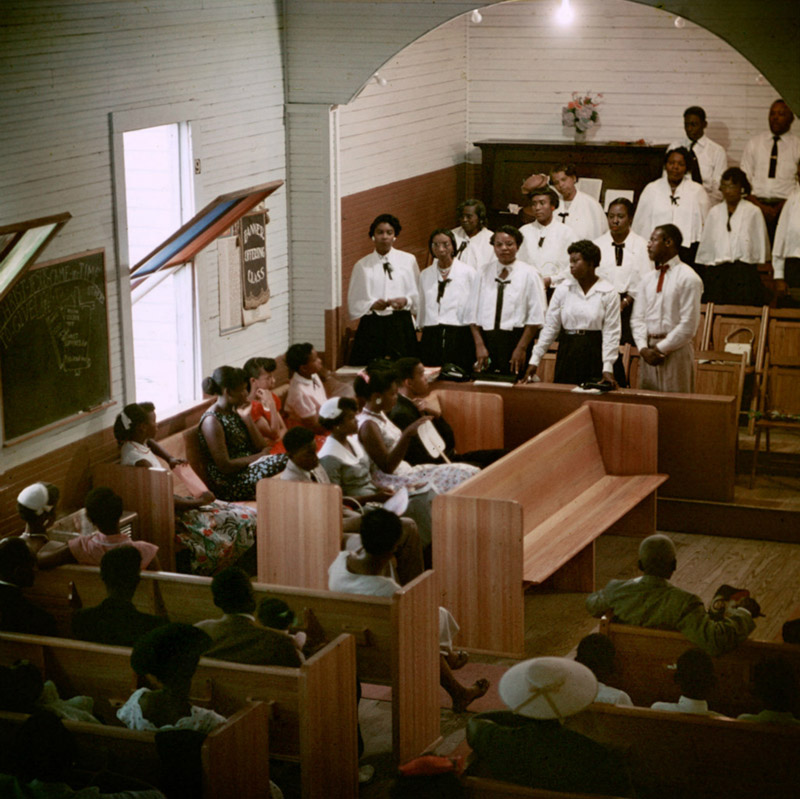
I remember the first time I saw with my own eyes a “Colored Entrance” sign. It was at a movie theater in Pensacola, Florida. It was a neon sign.
I remember being a 9 year old white boy in a department store in the South when I spotted two water fountains. One said “Colored”. I thought, wow, colored water. I pictured a rainbow of water coming out of the fountain and so I went over to drink from it. As I leaned down to the water, the heavy hand of a white man pulled me back roughly by the shoulder. At that moment, I realized what I had done. The shock of that realization has never left me. I am sad about these things but glad that I saw them with my own eyes because it is truly unbelievable.